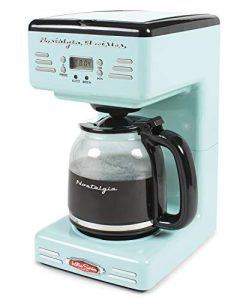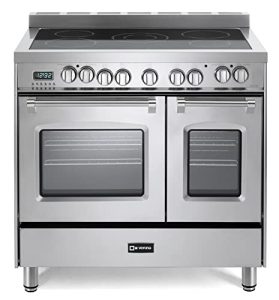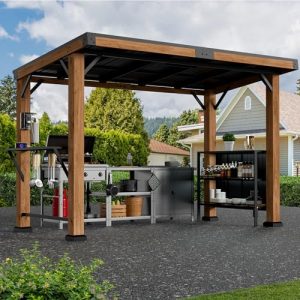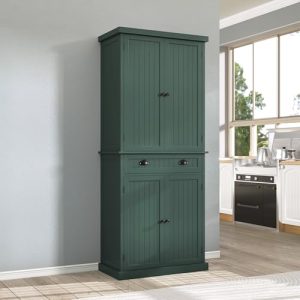Are you looking to remove your kitchen stove oven but unsure where to start? Taking out a stove oven might seem tricky, but with the right steps, you can do it safely and quickly.
Imagine freeing up space in your kitchen or getting ready for a new appliance without the hassle. In this guide, you’ll discover simple, clear instructions that make the process easy—even if you’ve never done it before. Keep reading, and you’ll gain the confidence to remove your kitchen stove oven like a pro.
Tools Needed
Removing a kitchen stove oven requires the right tools. Using proper tools makes the job easier and safer. Gathering everything before starting saves time and avoids frustration.
Basic Hand Tools
- Screwdrivers: Both flathead and Phillips types
- Adjustable wrench for loosening nuts and bolts
- Pliers to grip and twist tight parts
- Socket set for removing bolts in hard-to-reach spots
- Putty knife to help detach seals or panels
- Flashlight to see inside dark corners
Safety Equipment
- Work gloves to protect hands from sharp edges
- Safety goggles to shield eyes from dust and debris
- Dust mask to avoid inhaling particles
- Non-slip shoes for steady footing
- Electrical tester to ensure power is off
Preparing The Area
Preparing the area before removing your kitchen stove and oven is crucial for safety and efficiency. A well-organized space helps you avoid accidents and makes the removal process smoother. Taking time to set up your workspace properly saves you from unnecessary stress and potential damage.
Clearing Surrounding Space
Start by removing all items around your stove and oven. Clear countertops, nearby furniture, and any floor clutter to create enough room to move freely.
This also prevents anything from getting damaged or dirty during the removal. You might be surprised how much space is needed once you start pulling the appliance out.
Think about where you will place the stove temporarily. Is there a sturdy spot nearby? Planning this ahead avoids last-minute scrambling.
Turning Off Power And Gas
Safety first: switch off the electrical power to your stove at the circuit breaker. This step is non-negotiable to prevent shocks or electrical fires.
If your stove uses gas, turn off the gas supply valve. Double-check by trying to ignite the stove burners after shutting off the valve—there should be no flame.
If you’re unsure how to do this, calling a professional is a smart move. Have you ever underestimated how important these safety steps are until something almost went wrong? Take no risks here.
Disconnecting The Oven
Disconnecting the oven is a crucial step before removal. Safety is the top priority during this process. Proper disconnection prevents accidents and damage. Follow clear steps to ensure the oven is fully disconnected.
Unplugging Electrical Connections
Locate the oven’s power cord behind the unit. Gently pull the plug out from the electrical outlet. Avoid yanking the cord to prevent damage. Check that the power is off before unplugging.
Shutting Off Gas Supply
Find the gas valve near the oven or in the kitchen. Turn the valve clockwise to close the gas supply. Confirm that no gas flows by listening or smelling carefully. This step stops gas leaks and hazards.
Detaching Gas Line Safely
Use a wrench to loosen the gas line fitting slowly. Hold the line steady to avoid bending or breaking it. Have a cloth ready to catch any gas residue. After detaching, cover the pipe ends to block gas escape.
Removing The Oven
Begin by unplugging the oven and turning off the gas or electricity supply. Carefully detach screws and connectors before sliding the oven out of its space. Take your time to avoid damage or injury.
Removing the oven from your kitchen can seem like a daunting task, but with a bit of guidance, you can tackle it confidently. Whether you’re upgrading to a new model or performing maintenance, understanding the steps to safely remove your oven is crucial. Let’s dive into the process, ensuring each step is clear and straightforward.Loosening Mounting Screws
Begin by locating the mounting screws that secure your oven in place. These are typically found along the sides or top of the oven frame. Use a screwdriver to gently loosen them. Ensure you have a container nearby to keep these screws safe. Losing them might complicate reinstallation or disposal. If you feel resistance, double-check you’re using the correct screwdriver size to avoid stripping the screws.Sliding The Oven Out
Once the screws are loosened, it’s time to slide the oven out from its cavity. Carefully pull it towards you, making sure to maintain a firm grip on both sides. Pay attention to any electrical or gas connections as you slide the oven. These need to be disconnected before fully removing the oven. Take your time and avoid rushing this step to prevent any potential damage to surrounding cabinetry.Handling Heavy Lifting
Ovens can be surprisingly heavy, so enlisting help can make this process safer and easier. If you’re lifting alone, ensure you lift with your legs, not your back, to avoid injury. Consider using a dolly or moving straps if the oven proves too heavy or awkward to handle. These tools can make the process smoother and reduce strain. Ask yourself: is there a friend or family member who can lend a hand? Having an extra set of hands can make all the difference in managing the weight and maneuvering the appliance out of your kitchen. By following these steps, you’ll find that removing your kitchen stove oven is a manageable task. Remember, preparation and caution are key to ensuring a smooth and safe removal process.Post-removal Tips
After removing your kitchen stove oven, some important steps help keep the space ready and safe. These post-removal tips ensure your kitchen stays clean and prepared for the next appliance.
Inspecting The Area
Check the floor and walls for any damage or stains. Look for signs of wear, rust, or mold where the oven was. Examine the electrical and gas connections carefully. Make sure there are no leaks or loose wires. Early detection prevents future problems and keeps your kitchen safe.
Cleaning And Maintenance
Clean the space thoroughly to remove dust, grease, and food particles. Use a mild cleaner suitable for your kitchen surfaces. Pay special attention to corners and crevices. Clean or replace any damaged outlet covers or gas caps. Proper cleaning improves hygiene and keeps the kitchen fresh.
Preparing For New Installation
Measure the space accurately to fit the new stove oven. Check the power supply and gas lines for compatibility. Make sure the area is dry and free from debris. Plan how to move the new appliance safely into place. Preparing well saves time and avoids installation issues.
Frequently Asked Questions
How Do I Safely Remove A Kitchen Stove Oven?
Turn off power and gas supply first. Disconnect all connections carefully. Use proper tools to unfasten screws and bolts. Follow manufacturer instructions to avoid damage or injury.
What Tools Are Needed To Remove A Kitchen Oven?
You typically need a screwdriver, wrench, and pliers. A flashlight helps in tight spaces. Use gloves for safety. Some ovens may require specialty tools; check your manual.
Can I Remove The Oven Myself Or Hire A Professional?
Simple removals can be DIY if you have basic skills. For gas ovens or complex installations, hiring a professional is safer. Professionals ensure proper disconnection and avoid damage or hazards.
How Do I Disconnect The Gas Line From My Oven?
Turn off the gas supply valve first. Use a wrench to loosen the gas connector carefully. Check for leaks after disconnection. If unsure, call a licensed technician for help.
Conclusion
Removing a kitchen stove oven can seem tough but is doable. Follow the steps carefully and take your time. Always turn off the power and gas before starting work. Use the right tools to avoid damage or injury. Check that all connections are safe before removing the oven.
Clean the area after removal to keep your kitchen tidy. With patience and care, you can complete this task safely. This guide helps you save money and handle the job yourself. Don’t rush—safety first, always.

Sophie Hartwell is the founder of KitchenQuik.com, where she shares kitchen tips, smart cooking hacks, and the best product picks to make everyday cooking easier and more enjoyable.




